#spring 1917
Text
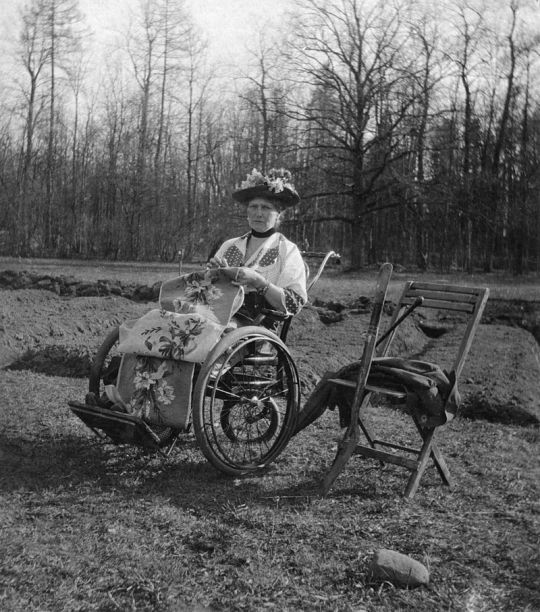
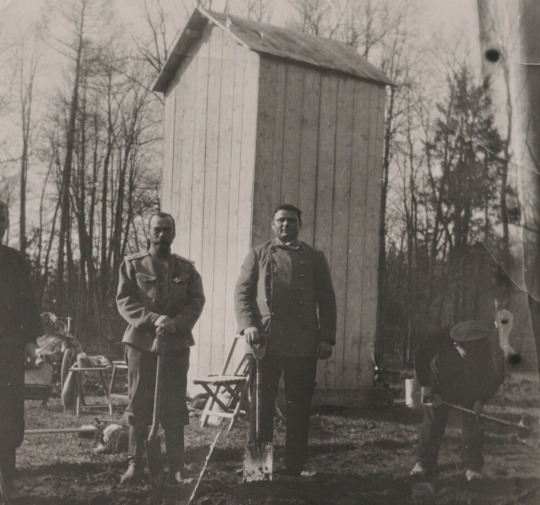

On the photographs: top - Alexandra Feodorovna in her wheel chair outside in the vegetable garden, embroidering, Tsarskoe Selo, April 1917; bottom: Nicolas II with his 'team' working in the vegetable garden in Tsarskoe Selo, spring 1917
'The ‘absence’ of Alexandra Feodorovna
One of the striking observations I made while studying the photographs of the Family for the period of March-July 1917 was the obvious and clear absence of Alexandra Feodorovna on them. Those couple of photographs where she did appear picture her motionless, a sort of frozen. She was not only absent from the photographs and took very little part in the outside activities but she also was absent from her own diary. In the period of March-July 1917, she made just a handful of diary entries on the following dates:
March 1917, Tsarskoe Selo
1, 2, 3, 4, 5, 8, 9, 10, 21, 22, 23, 27
April 1917, Tsarskoe Selo
1, 2, 8, 11, 12, 14, 15, 18, 23, 29, 30
May 1917, Tsarskoe Selo
6, 25, 26
June 1917, Tsarskoe Selo
3, 9, 10, 20
July 1917, Tsarskoe Selo
11, 13, 25, 29, 30, 31
The first time Alexandra Feodorovna made an appearance in ‘public’, e.g. went outside and sat in the garden was on the 11 of April. This occasion found a reflection in the diary entry of Nicolas II: ‘In the afternoon, Alix finally went for a walk with us. Nagorny pushed her in a wheel chair. She watched us work with the ice.’ In her own dairy, Alexandra Feodorovna described her appearance as follows: ‘In my wheel chair [was] in the garden with the others who were working with ice.’ [...] - Seraphima Bogomolova
Read more in Part One: 'Like Kings and Queens, Like Princes and Princesses'
#investigation#research#romanovs#nicolas ii#seraphima bogomolova#evidence#murder mystery#photographs#alexandrovsky palace#tsarskoe selo#spring 1917#Alexandra Feodorovna#vegetable garden#gardening#diaries
2 notes
·
View notes
Photo

Northern Lights, Tom Thomson, Spring 1917
#northern lights#tom thomson#thomson#spring#1917#1910s#1900s#20th century#painting#en plein air#landscape#nature#art#group of seven
415 notes
·
View notes
Text
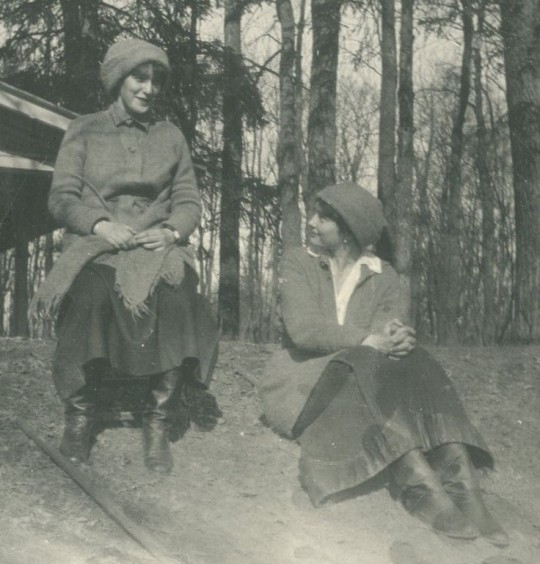
Smiling 😁 Grand Duchesses Anastasia Nikolaevna and Tatiana Nikolaevna of Russia in Tsarskoe Selo, spring of 1917.
#romanov#romanovs#anastasia nikolaevna#tatiana nikolaevna#tsarskoe selo#1910s#1917#spring of 1917#old royal photos#vintage#russian imperial family#house of romanov#A & T#T & A
29 notes
·
View notes
Text

Recent Acquisition - Ephemera Collection
Horse-Show Cotillion. White Sulphur Springs, W. Va.
August Eleventh, Nineteen Hundred Seventeen
7 notes
·
View notes
Text
Call it a hot take but Heartstopper (2022) is basically a modern day Maurice (1917) with the hair colors switched.
#heartstopper#alice oseman#maurice 1987#maurice 1917#em forster#hugh grant#james wilby#rupert graves#kit connor#joe locke#nick nelson#charlie spring#maurice hall#alec scudder#clive durham#tell me I’m wrong#can’t deny the parallels#and they thought we wouldn’t notice#i think you know who’s who
114 notes
·
View notes
Text
Water

Simon Battersea stood at the edge of the beach, watching as his younger two sons tore across the sand. He’d brought Louis and Oliver along with him to survey the English property he’d suddenly discovered amongst the half-destroyed papers. He’d sent a solicitor to the property and discovered that the tenants were aging and most were barely hanging on. So, he’d come out to check the property for himself. It was almost worse than what the solicitor had told him. The houses were falling apart. The soil wasn’t suited for crops. The tenants were all reaching their sixties.
“Papa! Papa! Can I go in the water?” Oliver cried, interrupting Simon’s thought process.
“Sure, Ollie. Just be careful,” Simon replied, grinning as his six-year-old tugged off most of his clothing.
Watching his sons be boys and children was one of the greatest joys of Simon’s life. Oliver laughed crazily as he jumped over the waves. Louis had also joined Oliver in the water and was kicking it up in the air.
“Papa! Come in, Papa!” Louis cried, waving to Simon.
Simon paused, before stripping off his jacket, suspenders, waistcoat, and tie. He kept his boots on, as he didn’t want to risk cutting his feet. But, his boots were old and he didn’t mind getting them soaked as he waded into the cold ocean water.
“Yay! Papa!” Oliver cried, flinging himself onto Simon’s leg.
Day 5: Water of @usernoneexistent’s Summer Break Challenge
#summer break challenge 2022#simon battersea#louis battersea#oliver battersea#hphl#hogwarts legacy#my aesthetic#my writing#i knew this prompt would be parent & child centered but went through a lot of combos before settling on simon & his two youngest boys#he also has sidney & niall but those two would both be a t hogwarts#this would probably take place in spring 1923#oliver’s born in 1917 ; louis on march 29 1913 ; niall in june 1911 & sidney in january 1909#simon’s boys wouldn’t have hemophilia because their x chromosome comes from their mother not simon
13 notes
·
View notes
Photo


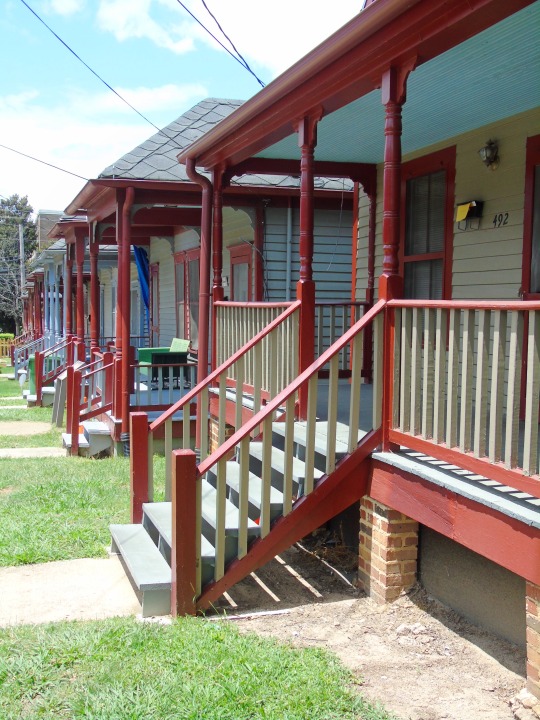
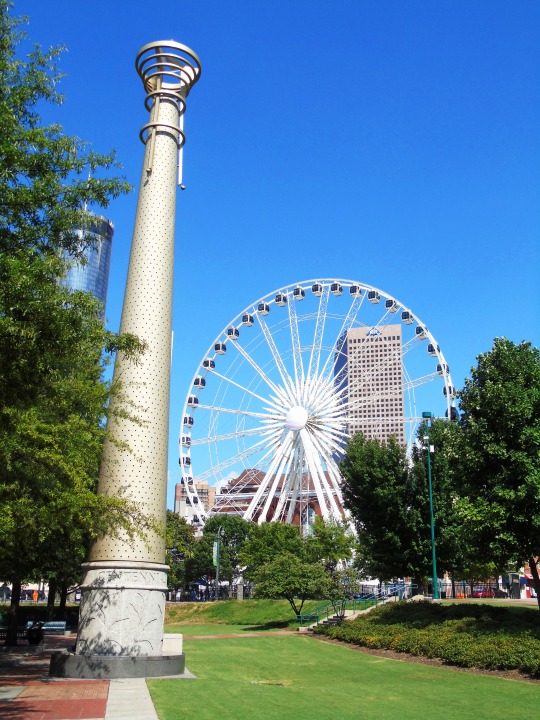





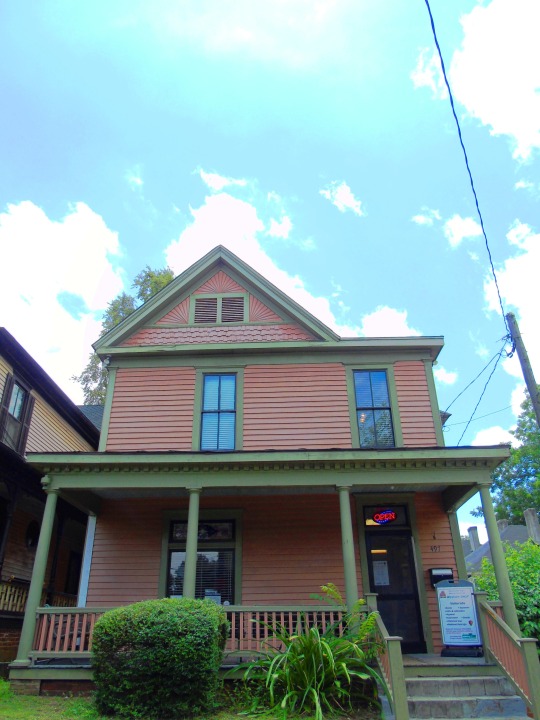
The Great Atlanta fire of 1917 (21st May) causes $5.5 million in damages, destroying some 300 acres including 2,000 homes, businesses and churches, displacing about 10,000 people but leading to only one fatality (due to heart attack).
#Centennial Olympic Park#Martin Luther King Jr. National Historic Site#Atlanta#The Martin Luther King Jr. Center for Nonviolent Social Change#Georgia#USA#Historic Ebenezer Baptist Church#FlatironCity#World of Coca-Cola#Walton Spring Triangle#Great Atlanta fire of 1917#21 May 1917#US history#anniversary#architecture#cityscape#tourist attraction#landmark#summer 2016#original photography
0 notes
Text

Spring Dance, Arthur F. Mathews, ca. 1917
#spring equinox#vernal equinox#spring#art#art history#Arthur F. Mathews#genre painting#genre art#American art#20th century art#oil on canvas#Smithsonian American Art Museum
750 notes
·
View notes
Text

Conrad Aiken,
Nocturne of Remembered Spring, and Other Poems
originally published: 1917
#conrad aiken#literature#words#quotes#academia#dark academia#quote#lit#books#books and libraries#reading#quote of the day#bookworm#book quotes#prose#booklr#bibliophile#excerpt#light academia#dream#mist#poetry
796 notes
·
View notes
Photo

Paul Branson (American,1885-1979)
Cover for Spring Planting Issue, Countryside Magazine, 1917
3K notes
·
View notes
Text

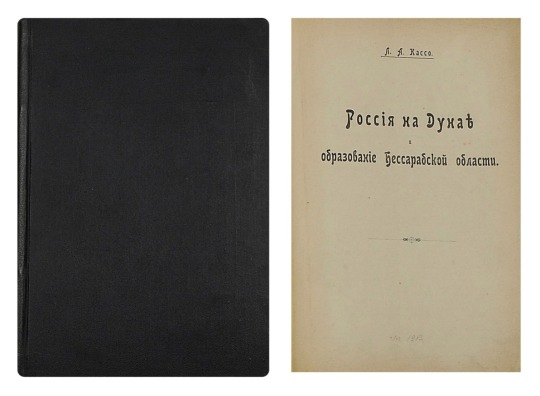



On the photographs: top left: History of the Byzantine Empire by Uspensky; top right: Russia on the Danube by Casso; in the middle: Merezhkovsky’s trilogy ‘Peter’; at the bottom left: Merezhkovsky’s novel ‘Alexander I’; bottom right: The Maritime Idea in Russian Land by Sr. Lt. Kvashnin-Samarin.
During his home arrest in Tsarskoe selo (spring-summer 1917), Nicolas II read lots of books - 32 to be precise. Some of the books he read aloud in the evenings to his daughters and wife, Alexandra Feodorovna, and some he read alone for himself. From the entries of his diary it appears that he read in Russian, English, and French languages.
Here is a list of the books together with the quotes from Nicolas II diary of spring-summer 1917:
Books that Nicholas II read in Tsarskoe Selo:
‘In the evening, read Chekhov aloud.’ (24 March 1917)
‘Started reading History of the Byzantine Empire by Uspensky.’ (4 April 1917)
‘In the evening, started reading aloud to the daughters the book by C. Doyle The Valley of the Fear.’ (14 Aapril 1917)
‘In the evening, started reading aloud to the children A Millionaire Girl.’ (18 April 1917)
‘Before lunch, read Hist.[ory] Byzant.[ine] Emp.[ire], and in the evening upstairs read aloud.’ (21 April 1917)
‘Finished reading the interesting History of the Byzantine Empire by Uspensky — 870 large pages.’ (25 April 1917)
‘Before lunch, started reading the book by Casso Russia on the Danube. (26 April 1917
'Started aloud the book S. Holmes - The Hound of the Baskervilles'. (9 April 1917)
'In the evening, started reading aloud Le Mystère de la Chambre Jaune'. (4 May 1917)
'In the evening, read aloud the book Le Parfum de la Dame en Noir, which started on May 11th'. (13 May 1917)
'Yesterday, started reading aloud Le Fauteuil Hanté. (20 May 1917)
In the evening, started reading aloud Le Comte de Monte-Christo'. (25 May 1917)
'In the evening, started reading the second volume Le Comte de Monte-Christo'. (31 May 1917)
'Started the 3rd volume Le Comte de Monte-Christo'. (5 June 1917)
'Started the French book La Maison des Hommes Vivants'. (14 June 1917)
'Finished La Maison des Hommes Vivants'. (16 June 1917)
'In the evening, started aloud the 6th book Comte de Monte-Christo'. (21 June 1917)
'In the evening, finished reading Le Comte de Monte-Christo'. (26 June 1917)
'In the evening, started aloud Arsène Lupin contre Sherlock Holmes'. (27 June 1917)
'In the evening, started aloud L’Homme à l’Oreille Cassée'. (2 July 1917)
'In the evening, started Tartarin de Tarascon'. (6 July 1917)
'Finished reading aloud Tartarin de Tarascon'. (9 July 1917)
'In the evening, started reading aloud Tartarin sur les Alpes'. (10 July 1917)
'Finished reading the 3rd part of Merezhkovsky’s trilogy ‘Peter’; well written, but leaves a heavy impression'. (11 June 1917)
'In the evening, finished reading aloud Tartarin sur les Alpes'. (14 July 1917)
'In the evening, I was pasting photographs into my album. Started reading aloud The Luck of the Vails'. (15 July 1917)
'Now reading Merezhkovsky’s novel ‘Alexander I’'. (19 July 1917)
'After tea, finished the 1st volume ‘Alexander I’. (21 July 1917)
'In the evening, finished The Luck of the Vails'. 923 July 1917)
'After lunch, started reading aloud The Poison Belt by Conan Doyle'. (24 July 1917)
'Reading The Maritime Idea in Russian Land by Sr. Lt. Kvashnin-Samarin'. (27 July 1917)
'In the evening, read aloud A Study in Scarlet by Conan Doyle'. (28 July 1917)
Compiled by Seraphima Bogomolova
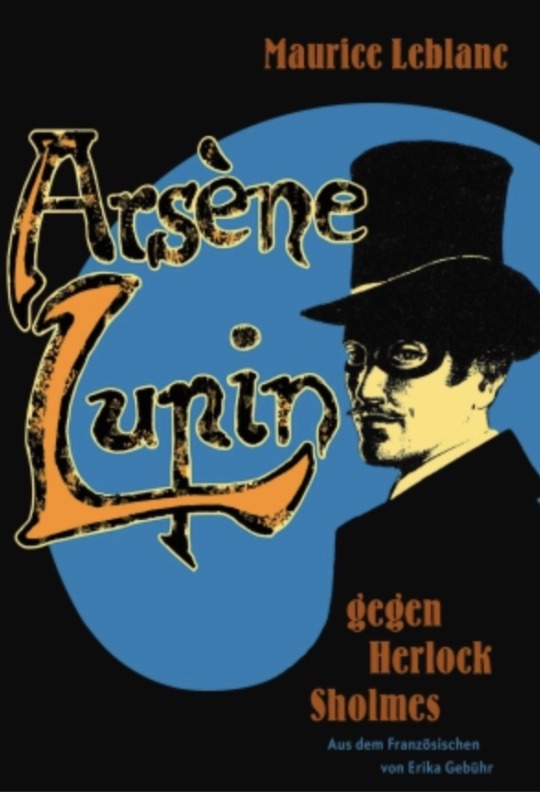
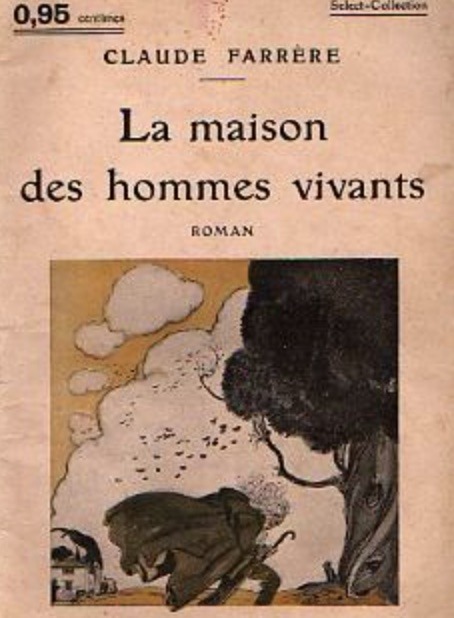


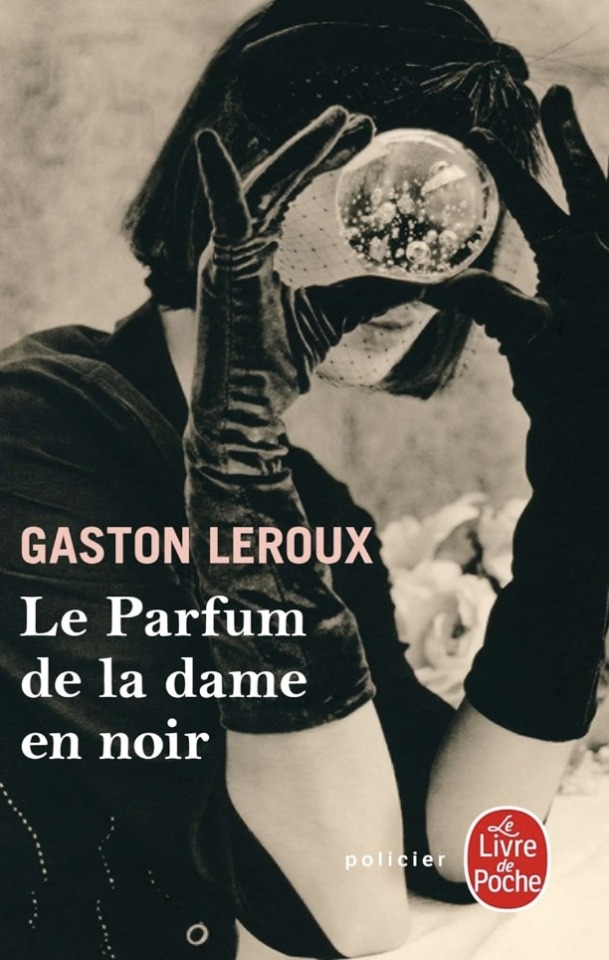
#research#romanovs#investigation#seraphima bogomolova#alexandrovsky palace#tsarskoe selo#spring 1917#Nicolas II#books#reading
1 note
·
View note
Text

Cesar Legaspi (1917-1994) - Ginintuang Mayo (Golden Spring)
#art#painting#cesar legaspi#spring#filipino art#philippine art#filipiniana#contemporary philippine art
414 notes
·
View notes
Photo
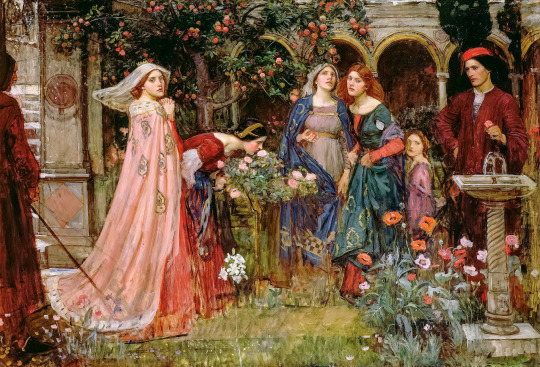
John William Waterhouse (Italian born-British, 1849-1917)
The Enchanted Garden, 1917
Illustrates a story from the Decameron where a man magically conjures a spring garden in the dead of winter. Unfinished.
#John William Waterhouse#art#fine art#classical art#the enchanted garden#british#italian#european art#europe#european#europa#fine arts#mediterranean#the enchanted garden 1917#waterhouse
2K notes
·
View notes
Text
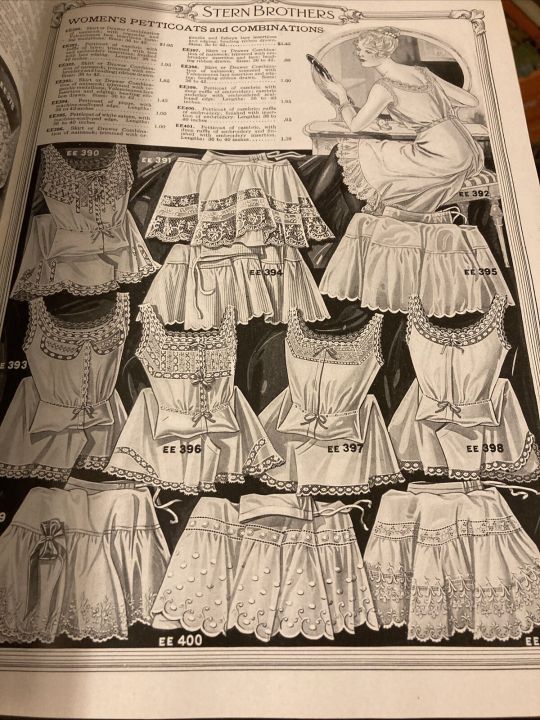

1917 Spring-Summer catalog pages from the Stern Brothers catalog.
222 notes
·
View notes
Text

Eva Beatrice Dykes (13 August 1893 – 29 October 1986) was a prominent educator and the third black American woman to be awarded a PhD.
Dykes was born in Washington, D.C., on August 13, 1893, the daughter of Martha Ann (née Howard) and James Stanley Dykes. She attended M Street High School (later renamed Dunbar High School). She graduated summa cum laude from Howard University with a B.A. in 1914. While attending Howard University, where several family members had studied, Eva was initiated into the Alpha chapter of Delta Sigma Theta. At the end of her last semester she was awarded Alpha Kappa Alpha Sorority Incorporated's first official scholarship. After a short stint of teaching at Walden University in Nashville, Tennessee, Dykes attended Radcliffe College graduating magna cum laude with a second B.A. in 1917 and a M.A in 1918. While at Radcliffe she was elected to Phi Beta Kappa. In 1920 Dykes began teaching at Dunbar High School, and in 1921 she received a PhD from Radcliffe (now a part of Harvard University). Her dissertation was titled “Pope and His influence in America from 1715 to 1815”, and explored the attitudes of Alexander Pope towards slavery and his influence on American writers. Dykes was the first black American woman to complete the requirements for a doctoral degree, however, because Radcliffe College held its graduation ceremonies later in the spring, she was the third to graduate, behind Sadie Tanner Mossell Alexander (1921, University of Pennsylvania) and Georgiana R. Simpson (1921, University of Chicago).
After her graduation from Radcliffe in 1921, Dykes continued to teach at Dunbar High School until 1929 when she returned to Howard University as a member of the English Faculty. An excellent teacher, Dykes won a number of teaching awards during her 15 years of service at Howard University. Her publications include Readings from Negro Authors for Schools and Colleges co-authored with Lorenzo Dow Turner and Otelia Cromwell (1931) and The Negro in English Romantic Thought: Or a Study in Sympathy for the Oppressed (1942). In 1934 Dykes began writing a column in the Seventh-day Adventist periodical Message Magazine, this continued until 1984.
In 1920 Dykes joined the Seventh-day Adventist Church, and in 1944 she joined the faculty of the then small and unaccredited Seventh-day Adventist Oakwood College in Huntsville, Alabama, as the Chair of the English Department. She was the first staff member at Oakwood to hold a doctoral qualification and was instrumental in assisting the college to gain accreditation. Dykes retired in 1968 but returned to Oakwood to teach in 1970 and continued until 1975. In 1973 the Oakwood College library was named in her honor and in 1980 she was made a Professor Emerita. In 1975 the General Conference of the Seventh-day Adventist Church presented Dykes with a Citation of Excellence honouring her for an outstanding contribution to Seventh-day Adventist education. Dykes died in Huntsville on October 29, 1986, at the age of 93.
#black history#black literature#black tumblr#black excellence#black community#civil rights#black history is american history#black girl magic#blackexcellence365
106 notes
·
View notes
Text
LGBT literature of the 1860s–1910s. Part 5
After a long pause, the list is back! Here we have a couple of plays, accounts by two trans women, lesbian poetry, and more.
1. Despised and Rejected, by A.T. Fitzroy (Rose Allatini; 1918). A pacifist novel published during World War One? With gay and lesbian characters? Yes, that was sure to get people in trouble. Its publisher was fined and the judge called it “morally unhealthy and most pernicious”. So, Dennis is a young composer who hates violence and therefore refuses to go to war. He also suffers because he is a “musical man”, that is, gay, and loves Alan, art-loving son of a wealthy businessman. His friend Antoinette, meanwhile, is “strangely attracted” to a woman. Nevertheless, the two attempt to love each other. When the war begins, Alan appears in Dennis’ life again, and they try to avoid being sent to the front together. Alan also persuades Dennis to accept who he is. Edward Carpenter himself defended the novel, saying that “the book is also a plea for toleration of a very much misunderstood section of humanity”.
Read online
2. Autobiography of an Androgyne, by Ralph Werther (1918). Ralph Werther, also known as Jennie June, wrote this autobiography for doctors, and it is very revealing. Being a New York fairy (male prostitute) and possibly a trans woman, they tell frankly about the city’s gay underworld of the early 20th century and their personal experience, which is sometimes too frank and dark perhaps, but all the more interesting.
Read online
3. Poems by Mikhail Kuzmin. Kuzmin was not just the author of Russia’s first gay novel, but also a poet. Many of his works were dedicated to or mentioned his lovers. I’d recommend Where Will I Find Words (in English and Russian), Night Was Done (both in English and Russian), from the 1906-1907 collection Love of This Summer (available fully in Russian), mostly based on his love affair with Pavel Maslov in 1906. And also If They Say (in English and Russian), which is a great statement.
4. The Loom of Youth, by Alec Waugh (1917). A semi-biographical novel based on Evelyn Waugh’s older brother’s experience at Sherborne School in Dorset. It is a story of Gordon Caruthers’ school years, from the age of 13 to 19, and it is full of different stories typical for public schools, be it pranks and cheating exams or dorm life and sports. Although the homosexual subject was quite understated, the author implied that it was a tradition and open secret in public schools. The book became popular and soon caused a great scandal. Worth noting that before that Alec was expelled for flirting with a boy.
Read online
5. Two Speak Together, by Amy Lowell (1919). Lowell was a famous American poet and lesbian. Many of her poems were dedicated to her lover, actress Ada Dwyer Russell, specifically the section Two Speak Together from Pictures of the Floating World. These poems are infused with flower imagery, which wasn’t uncommon for lesbian poetry of the time.
Read online
6. De berg van licht/The Mountain of Light, by Louis Couperus (1905-1906). Couperus is called the Dutch Oscar Wilde for a reason: this is one of the first decadent novels in Dutch literature. It is also a historical one, telling about a young androgynous Syrian priest Heliogabalus who then becomes a Roman Emperor. Homoerotism, hedonism, aestheticism: Couperus creates a very vivid world of Ancient Rome. He also covered the topic of androgyny in his novel Noodlot, which was mentioned in Part 3 of this list.
Read online in Dutch
7. Frühlings Erwachen/Spring Awakening/The Awakening of Spring, by Frank Wedekind (1891, first performed in 1906). This play criticized the sexually oppressive culture prevalent in Europe at the time through a collection of monologues and short scenes about several troubled teens. Each one of them struggles with their puberty, which often leads to a tragic end. Like in The Loom of Youth, homosexuality is not the central focus of the play, but one character, Hänschen, is homosexual and explores his sexuality through Shakespear and paintings. The play was later turned into a famous musical.
Read online in German or in English
8. Twixt Earth and Stars, by Radclyffe Hall (1906). Though it wasn’t known to many at the time, these poems were dedicated to women, some to Hall’s actual lovers.
Read online
9. The Secret Confessions of a Parisian: The Countess, 1850-1871, by Arthur Berloget (published in 1895). This account is similar to the Autobiography of an Androgyne, albeit shorter. The author nowadays is thought to be a trans woman. They describe their love for women’s dresses, the euphoria from wearing dresses, makeup and wigs, the life as a “female impersonator” in Parisian cafe-concerts, and their love affair with a fellow prisoner. The autobiography is not available online, but you can read it in Queer Lives: Men’s Autobiographies from Nineteenth-Century France by William Peniston and Nancy Erber.
10. At Saint Judas’s, by Henry Blake Fuller (1896). This is possibly the first American play about homosexuality. It is very short. An excited groom is waiting for his wedding ceremony in the company of his gloomy best man. They are former lovers, and this short scene is not going to end well…
Read online
Previous part is here
#lgbt literature#lgbt fiction#queer history#queer fiction#lesbian literature#russian literature#gay literature#gay history#spring awakening#lesbian history#blog: history#blog: literature
261 notes
·
View notes